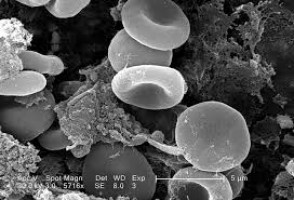
Circulating tumour DNA (ctDNA) is emerging as a blood-based biomarker for many solid tumour types, including melanoma.
A new study that assessed ctDNA in the blood of patients with BRAF wild-type (BRAF WT) stage III and IV melanoma concludes that measuring ctDNA may lead to alternative treatment options and better outcomes for these patients, report investigators in The Journal of Molecular Diagnostics, published by Elsevier.
For patients with BRAF WT stage III and IV melanoma, there is an urgent clinical need to identify prognostic biomarkers and biomarkers to predict treatment response.
Approximately 40% to 50% of all patients with late-stage cutaneous melanoma have a BRAF p.V600 mutation; in these patients treatment with selective BRAF and MEK inhibitors (BRAFi/MEKi) significantly prolongs both progression-free survival and overall survival.
Immune checkpoint inhibitor (ICI) therapy shows promising results when combined with targeted therapies in patients with BRAF p.V600-positive tumours.
Longer overall survival is observed when ICI therapies are combined (anti-PD-1 and anti-CTLA-4).
However, BRAF WT patients or patients harbouring an alternative BRAF variant do not benefit from these combinatorial ICI therapies.
Lead investigators Vanessa F. Bonazzi, Ph.D., and Lauren G. Aoude, Ph.D., The Frazer Institute, The University of Queensland, explain: “Current clinical practice means both BRAF WT and BRAF p.V600 positive patients receive ICI therapy. However, they do not all benefit. We urgently need to identify biomarkers predictive of disease recurrence and response to alternative therapies after ICI failure. Patients could be better matched to specific therapies that target genomic alterations in their tumours using biomarkers that identify specific tumour targets and guide patient management. The aim of this study was to identify targetable variants present in the blood that may lead to alternative treatment options and better outcomes for BRAF WT patients.”
Abnormalities in ctDNA shed into the bloodstream by dead or dying tumour cells can be detected and measured in non-invasive tests.
Investigators assessed ctDNA from the plasma samples of 106 patients.
They also included serial blood collections for a subset of 16 patients to perform a longitudinal study.
Variants were detected in 85% of patients, all in targetable pathways.
Interestingly, in melanoma, the concentration of ctDNA had prognostic value.
Patients with stage IV melanoma with low ctDNA concentrations, less than 10 ng/mL, had significantly better disease-specific survival and progression-free survival.
Patients with both a high concentration of ctDNA and any detectable ctDNA variants had the worst prognosis.
In addition, these results indicated that longitudinal changes in ctDNA correlated with treatment response and disease progression determined by radiology.
Dr. Bonazzi notes: “Our results showed that changes in ctDNA over time correlated with response to treatment and progression of the disease as assessed by radiology. Measuring patients’ ctDNA throughout their treatment would help follow their potential response and adapt the treatment regimen accordingly. While patients can have a PET/CT scan every six months, a blood test could be performed monthly and provide an accurate answer followed by immediate actions. If for example, the patient ctDNA profile shows a PIK3CA mutation from baseline, you could follow it in different blood samples from this patient over time, and down the track, you could use a PIK3CA inhibitor and hopefully be able to prevent the potential recurrence of the disease.”
Dr. Aoude adds: “The sequencing of the ctDNA provides information for potential drug targets. Furthermore, the quantification could provide additional information regarding disease-specific survival and progression-free survival.”
This study confirms that ctDNA could be used as a noninvasive liquid biopsy to identify recurrent disease and detect targetable variants in patients with late-stage melanoma.
The investigators conclude that the ability to use ctDNA as a clinical tool is highly attractive because it is a non-invasive, repeatable test that can offer additional clinical information regarding treatment response and tumour recurrence.
This study demonstrates the value of ctDNA in patients with stage IV melanoma as a tool to detect somatic variants with clinically targetable mutations, as a prognostic indicator in patients with stage IV melanoma, and as a tool for tracking treatment response to ICI therapy.
Source: Elsevier